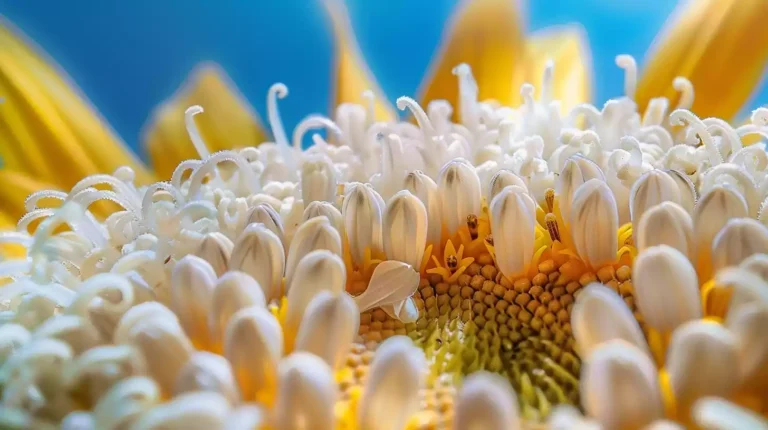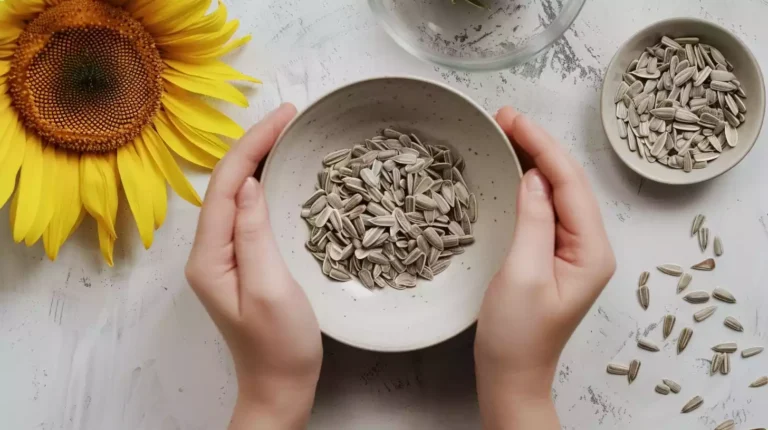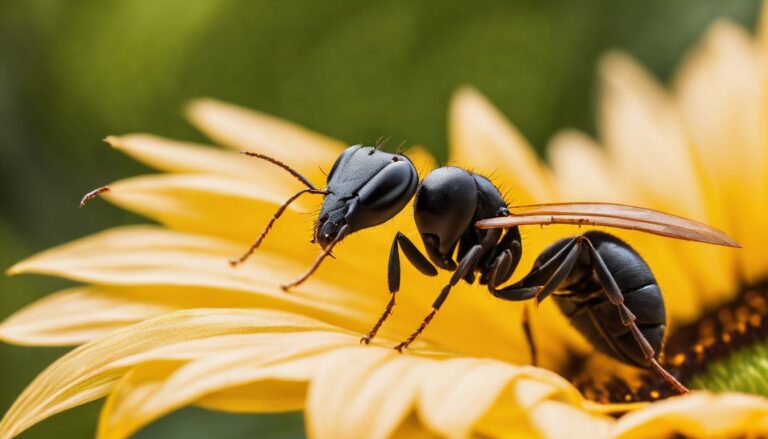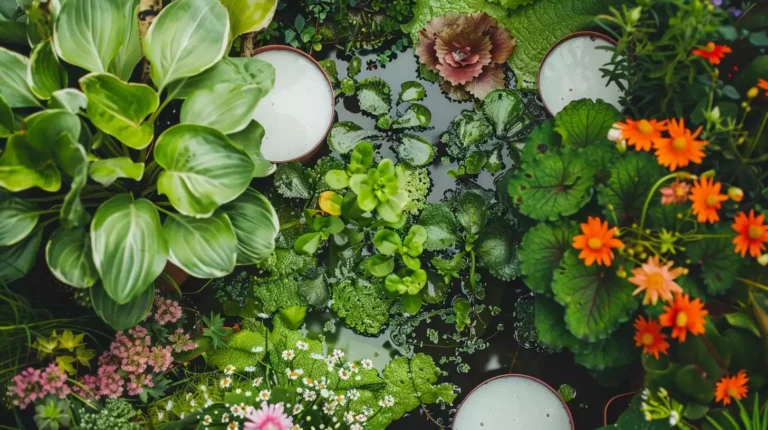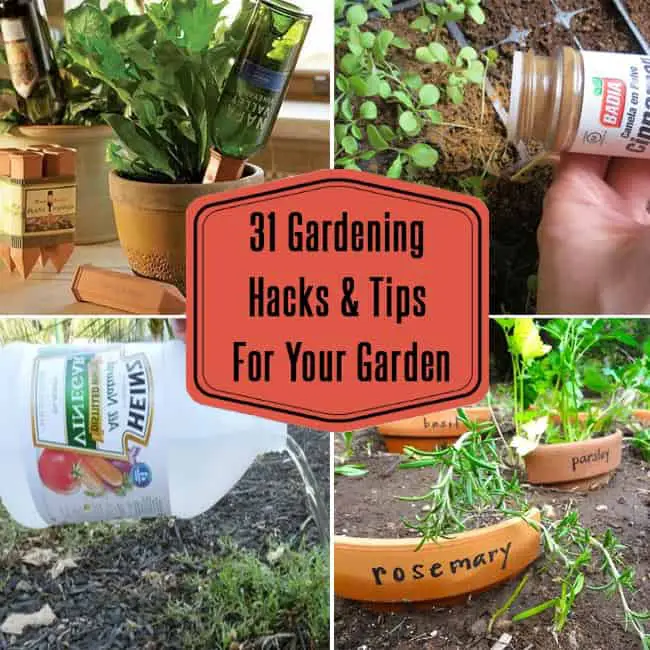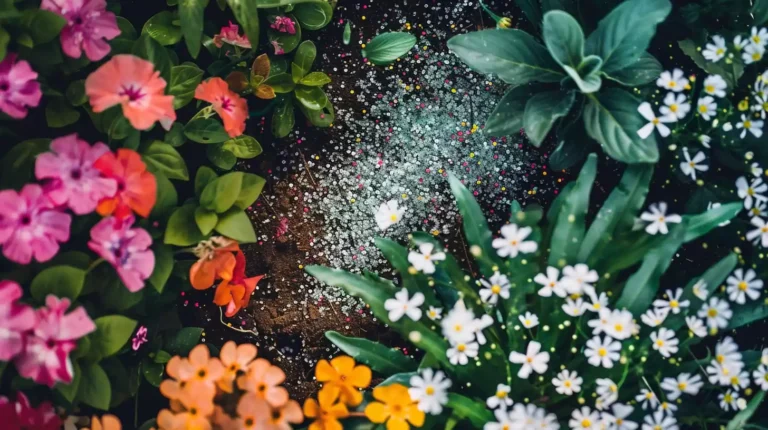11 Best Ground Cover Plants For Your Garden
Looking to enhance your garden with vibrant colors and easy maintenance?
Consider Creeping Thyme, Irish Moss, Bugleweed, Sedum, Corsican Mint, Snow-in-Summer, Blue Star Creeper, Brass Buttons, and Woolly Thyme. These ground cover plants offer a touch of nature’s beauty while attracting pollinators and thriving in various conditions.
Whether you aim for shade, full sun, or unique landscaping ideas, these options provide both functionality and aesthetics. With a mix of fragrant, drought-tolerant, and low-maintenance varieties, your garden can flourish with these diverse choices.
Key Points
- Choose Creeping Thyme for low maintenance and colorful ground cover.
- Opt for Bugleweed for shade and attracting pollinators.
- Consider Snow-in-Summer for full sun areas.
- Select Sedum Varieties for drought tolerance and attracting pollinators.
- Use Brass Buttons for unique landscaping ideas.
Creeping Thyme
I love how Creeping Thyme adds a pop of color and fragrance to my garden with its low-growing, spreading nature. This variety of thyme stands out for its vibrant purple flowers and aromatic leaves.
Propagating Creeping Thyme is easy – I simply take softwood cuttings in early summer and plant them in well-draining soil. This method helps new plants establish quickly, filling my garden with delightful scents and hues.
Comparing different thyme varieties can be a fun experiment, allowing me to appreciate their unique characteristics. With the right propagation techniques, I can easily expand my Creeping Thyme collection and enjoy its beauty year after year.
Irish Moss
Irish Moss effortlessly enhances the beauty of my garden with its lush green carpet-like appearance. Thriving in shady areas, this ground cover plant is perfect for parts of the garden where other plants struggle.
With low maintenance requirements, it only needs occasional watering to stay healthy and vibrant. Irish Moss prefers well-draining soil and can tolerate various types, including sandy or rocky soils. When planting, keep the soil consistently moist but not waterlogged.
Its shade tolerance makes it ideal for under trees or along pathways with limited sunlight. Adding Irish Moss has brought tranquility and elegance to my garden with minimal upkeep.
Bugleweed
Expanding my garden’s ground cover options, Bugleweed adds a vibrant splash of color and texture to the landscape. This beautiful plant offers several benefits, such as suppressing weeds, attracting pollinators, and thriving in shady areas. However, it’s important to be aware of its drawbacks, like its aggressive spreading nature, which may require containment.
When propagating Bugleweed, I can consider these techniques:
- Divide the plant in spring or fall to control its growth.
- Plant cuttings in well-draining soil to encourage root development.
- Ensure sufficient moisture for successful establishment.
- Regularly prune to maintain a tidy appearance and prevent overcrowding.
With these tips in mind, Bugleweed can be a fantastic addition to my garden, bringing both aesthetic appeal and practical benefits.
Sedum
I’ll share with you the delightful array of Sedum varieties, commonly known as stonecrop, that can grace your garden. These easy-to-care-for plants bring beauty and charm to any landscape.
I’ll also provide planting and care tips, along with the best growing conditions to help these lovely plants thrive in your garden.
Sedum Varieties Overview
Exploring the diverse range of Sedum varieties offers me a multitude of options for ground cover plants. Sedum propagation techniques allow for easy spreading of these plants, making them a convenient choice for filling in bare spots in my garden.
Sedum’s drought tolerance adaptation makes it a resilient option for low-maintenance landscaping, thriving even in dry conditions. The various colors and textures of Sedum varieties provide visual interest, from the vibrant green of Sedum reflexum to the purple hues of Sedum ‘Purple Emperor’.
These plants not only beautify my garden but also attract pollinators, making them a beneficial addition to my outdoor space.
Planting and Care Tips
To ensure the successful growth and development of Sedum plants in my garden, I follow these essential planting and care tips.
| Watering Frequency | Soil Type |
|---|---|
| Once a week | Well-draining sandy soil |
| Sun Exposure | Pruning Techniques |
|---|---|
| Full sun | Trim back in spring to promote new growth |
Proper watering is crucial, with a weekly schedule being ideal for Sedum plants. They thrive in well-draining sandy soil that prevents waterlogging. In terms of sun exposure, these plants enjoy full sun to flourish. For maintenance, a trim back in spring encourages new growth and keeps the plant healthy. I follow these guidelines to enjoy vibrant and thriving Sedum in my garden.
Best Growing Conditions
I’ve found that providing ideal growing conditions is key for successfully cultivating Sedum plants in my garden. When growing Sedum, specific factors can make a difference in their health and growth. Here are some key considerations:
- Soil pH: Sedum plants prefer well-draining soil with a slightly acidic to neutral pH.
- Sunlight: These plants thrive in full sunlight, so make sure they get at least 6 hours of direct sunlight daily.
- Watering frequency: Sedum plants are drought-tolerant, so it’s best to water them sparingly, letting the soil dry out between watering sessions.
- Mulching techniques: Applying organic mulch around Sedum plants can help retain moisture and suppress weed growth.
Corsican Mint
I enjoy Corsican Mint, a charming ground cover plant, for its fragrant leaves that release a refreshing scent when stepped on.
This low-growing herb is perfect for filling in spaces between stepping stones or along the edges of pathways, creating a lush carpet effect in my garden.
It adds a touch of greenery and beauty to my outdoor space.
Fragrant Ground Cover
As I stroll through my garden, the delicate fragrance of Corsican Mint ground cover gently wafts around me. This aromatic herb not only provides a refreshing scent but also serves as a beautiful and low-maintenance ground cover option.
Here are some key points about Corsican Mint:
- Compact Growth: Corsican Mint forms a dense mat, ideal for filling gaps between stepping stones or in rock gardens.
- Easy to Grow: Thriving in partial shade and moist, well-drained soil, this fragrant ground cover is a breeze to cultivate.
- Seasonal Blooms: Along with its delightful aroma, Corsican Mint produces tiny lilac flowers during the summer.
- Versatile Use: Apart from its olfactory charm, Corsican Mint is a popular choice for container gardening or as a border plant.
Low-Growing and Spreading
I invite you to enjoy the lush carpet of green that effortlessly spreads across my garden with the low-growing and spreading Corsican Mint ground cover. Corsican Mint not only looks visually appealing but also offers drought-resistant options and shade-loving varieties for those tricky spots in my garden.
This versatile ground cover is perfect for areas where other plants struggle to thrive. The minty fragrance that fills the air when I walk by adds an extra sensory delight to my garden experience. Whether I’m filling in gaps between stepping stones or creating a uniform green landscape, Corsican Mint is a fantastic choice that requires minimal maintenance.
Check out the table below for more details:
| Drought Resistant Options | Shade Loving Varieties |
|---|---|
| Corsican Mint | Corsican Mint |
| Sedum | Ajuga |
| Thyme | Pachysandra |
| Ice Plant | Lamium |
| Creeping Jenny | Sweet Woodruff |
Ideal for Pathways
Creating a charming green pathway with Corsican Mint ground cover adds natural beauty to my garden. This low-growing plant is drought tolerant, easy to maintain, and releases a refreshing minty scent when stepped on.
Its dense growth pattern also suppresses weeds, keeping pathways neat and tidy. Corsican Mint is a perfect choice for both visually appealing and functional pathways in my garden.
Creeping Jenny
I enjoy how Creeping Jenny brings vibrant color and lushness to my garden with its trailing golden foliage. Its bright yellow leaves create a striking contrast against other greenery, making it a perfect choice for colorful groundcovers.
I like pairing Creeping Jenny with purple flowers like lavender or petunias for a visually stunning effect. Its cascading nature makes it great for hanging baskets or spilling over raised beds.
With its low maintenance and vigorous growth, Creeping Jenny is a versatile and attractive addition to any garden, bringing sunshine and cheer wherever it grows.
Mazus
When it comes to Mazus, proper planting techniques are essential for their growth and health.
I’ll share some valuable tips on caring for Mazus so you can enjoy a lush and vibrant ground cover in your garden.
Let’s see how to help your Mazus thrive with these essential care guidelines.
Planting Mazus Properly
When planting Mazus, spacing them 6 to 12 inches apart allows room to spread and grow. Keep the soil consistently moist by watering regularly, especially in dry periods.
Mazus thrives in well-draining soil rich in organic matter, so ensure good soil preparation. Choose a location with partial shade to full sun for optimal growth.
Following these planting tips will help Mazus plants establish well and flourish in the garden.
Mazus Care Tips
Proper care for Mazus plants involves maintaining consistent soil moisture and providing adequate sunlight to ensure their healthy growth and development in the garden. When it comes to caring for Mazus, watering frequency is key. These plants prefer consistently moist soil, so watering them regularly, especially during dry spells, is essential.
Mazus thrives in slightly acidic to neutral soil with a pH range between 5.5 and 7.0. Testing the soil and adjusting the pH levels accordingly will help Mazus plants flourish. Here’s a guide to help care for Mazus effectively:
| Care Aspect | Details |
|---|---|
| Watering Frequency | Keep soil consistently moist |
| Soil pH Requirements | pH range between 5.5 and 7.0 |
Snow-in-Summer
Snow-in-Summer, also known as Cerastium tomentosum, is a popular ground cover plant with silver foliage and white flowers. This charming plant thrives in various garden conditions, offering both beauty and functionality.
To maintain Snow-in-Summer in my garden, I will:
- Regular Pruning: I’ll trim back the plant after flowering to encourage new growth.
- Well-Drained Soil: I’ll ensure the soil has good drainage to prevent root rot.
- Full Sun: I’ll plant it in areas with full sun exposure for optimal growth.
- Mulching: I’ll mulch around the plant to retain moisture and suppress weeds.
For creative landscaping ideas, I can pair Snow-in-Summer with colorful perennials or plant it along pathways for a delicate touch.
Blue Star Creeper
Blue Star Creeper, known as Laurentia fluviatilis, is a charming ground cover plant with small, star-shaped blue flowers. It thrives in well-drained soil and adapts well to both full sun and partial shade.
Keeping the soil moist (but not waterlogged) and regular watering, especially during dry spells, are key to its success. Occasional trimming after blooming can encourage new growth and maintain a tidy appearance.
With its lovely blue flowers and easy-going nature, Blue Star Creeper is a delightful addition to any garden, adding beauty and charm to your outdoor space.
Brass Buttons
When planting Brass Buttons in my garden, I ensure they receive adequate sunlight and well-draining soil for optimal growth. These charming plants can add a touch of whimsy to my outdoor space with their dainty yellow flowers and fern-like foliage.
Here are some tips for incorporating Brass Buttons into my garden design:
- Create Unique Landscaping Ideas: I use Brass Buttons to border pathways or fill in gaps between stepping stones.
- Enhance Creative Garden Designs: I combine Brass Buttons with other low-growing plants for a dynamic ground cover effect.
- Utilize in Rock Gardens: I plant Brass Buttons among rocks to soften the edges and add a pop of color.
- Consider Container Planting: Brass Buttons can thrive in containers, making them versatile for patios or balconies.
Woolly Thyme
I’m adding diversity to my garden with Woolly Thyme, a versatile ground cover plant that thrives in various conditions. Plant it in well-draining soil and a sunny spot for best growth. This low-maintenance plant needs minimal pruning; just trim any overgrowth to keep it tidy.
Woolly Thyme is drought-tolerant once established, perfect for areas with limited water. Water sparingly, letting the soil dry between waterings to avoid root rot. Full sunlight helps it flourish, but it can handle partial shade too.
With its fuzzy foliage and pleasant scent when crushed, Woolly Thyme brings visual appeal and sensory delight to any garden.

